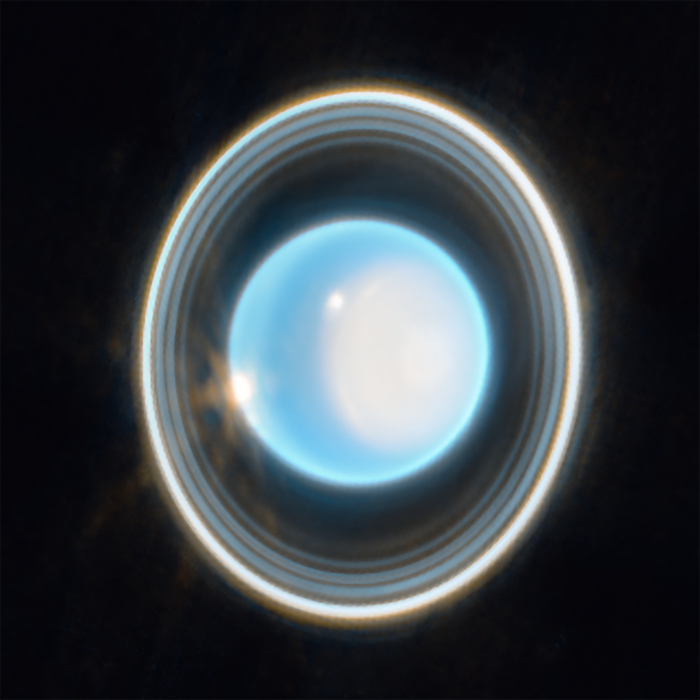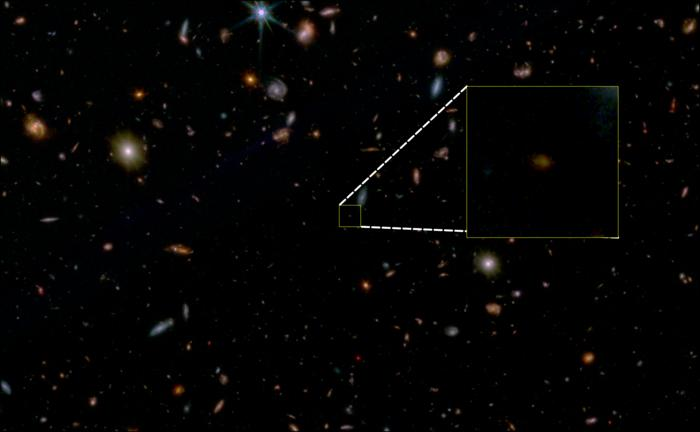In the wake of the extraordinary image of Neptune released in 2022, the James Webb Space Telescope (JWST) of NASA, the European Space Agency (ESA) and Canada (CSA) also passes the test of Uranus and its 13 rings, demonstrating once again the 'incredible sensitivity of its instruments: the new image of this icy giant, in fact, shows in unprecedented detail the bright features of its atmosphere and its faint dusty rings, which until now had only been captured by Voyager 2, while flew past Uranus in 1986, and from the Keck Observatory located on the Mauna Kea volcano in Hawaii.
Uranus, the seventh planet in the Solar System, is unique: it rotates on its side, at an angle of about 90 degrees to the plane of its orbit, with the result that the poles experience many years of constant sunlight followed by one same period of complete darkness.
In fact, the planet takes 84 years to orbit the Sun. Currently at the north pole, which is the part photographed by Webb, it is late spring and summer will arrive in 2028.
The infrared light captured by the Jwst also allows us to observe how dynamic the atmosphere of Uranus is, with the great luminosity of the polar cap, which seems to appear in spring and vanish in autumn with a still mysterious mechanism, and with extremely bright clouds, probably linked to ongoing storms.
The planet also has 13 known rings, of which 11 are visible in the Webb telescope image: some are so bright that they are almost merged into one large ring.
Researchers expect Webb's future observations of Uranus will also reveal the two outermost and faintest rings, which were discovered in 2007 thanks to NASA's Hubble Telescope.














